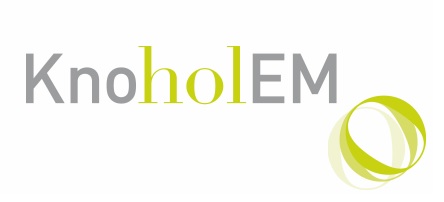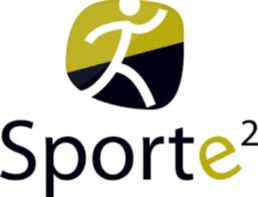Completed projects
Mae'r cynnwys hwn ar gael yn Saesneg yn unig.
Our previous projects include:
KnoholEM

Knowledge-based energy management for public buildings through holistic information modelling and 3D visualization. It is a collaborative research project co-financed by the European Commission within the scope of the 7th Framework Programme. Its international consortium consists of 13 partners from 6 different countries.
The main objective of the project is to elaborate an intelligent energy management solution for energy efficient buildings and spaces of public use.
Sponsor: The European Commission under FP7.
The video presents research that addresses the endemic problem of the gap between predicted and actual energy performance in public buildings. A system engineering approach is used to characterize energy performance factoring in building intrinsic properties, occupancy patterns, environmental conditions, as well as available control variables and their respective ranges. Due to the lack of historical data, a theoretical simulation model is considered. A semantic mapping process is proposed using Principle Component Analysis (PCA) and multi regression analysis (MRA) to determine the governing (i.e. most sensitive) variables to reduce the energy gap with a (near) real-time capability. Further, an artificial neural network (ANN) is developed to learn the patterns of this semantic mapping, and is used as the cost function of a genetic algorithm (GA) based optimization tool to generate optimized energy saving rules factoring in multiple objectives and constraints. Finally, a novel rule evaluation process is developed to evaluate the generated energy saving rules, their boundaries, and underpinning variables. The proposed solution has been tested on both a simulation platform and a pilot building - a care home in the Netherlands. Validation results suggest an average 25% energy reduction while meeting occupants’ comfort conditions.

Resilient
Coupling renewable energy, storage and ICT's for low carbon intelligent energy management at district level. The aim of the project was to design, develop, install and assess the energy environmental benefits of a new integrated concept of interconnectivity between buildings, DER, grids and other networks at a district level.
The approach combined different innovative technologies including smart ICT components, optimized energy generation and storage technologies, also for RES, integrated to provide real-time accounts of energy demand and supply at a district level and assist in decision making processes. More about Resilient.

Water analytics and Intelligent Sensing for Demand Optimised Management
WISDOM aims and integrating and demonstrating innovative ICT systems and services for efficient water use and reuse in order to improve household, business and societal awareness and induce changes in consumers' behaviour and to enable innovative resource and demand management scheme and adaptive pricing incentives. More about WISDOM.
Sponsor: The European Commission under FP7.

Mas2tering
Multi-agent systems and secured coupling of telecom and energy grids for next generation smart grid services.
A 3-year technology-driven and business-focussed project, aimed at developing innovative information and communication technology (ICT) platform for the monitoring and optimal management of low-voltage distribution grids by integrating last mile connectivity solutions with distributed optimisation technologies, while enhancing the security of increased bi-directional communications. More about Mas2tering.
Sponsor: The European Commission under FP7.

PERFORMER
Portable, exhaustive, reliable, flexible and optimized approach to monitoring and evaluation of building performance.
The project aims to develop an innovative and comprehensive solution towards improved building energy management and guaranteed energy performance. More about PERFORMER.
Sponsor: The European Commission under FP7.
WANDA
Developing a real-time abstraction and discharge permitting process for catchment regulation and optimised water management.
Sponsor: TSB via Cambrensis

BIM4VET
Standardised Vocational Education and Training for BIM in EU.
Building Information Modelling (BIM) is in the process of rapidly changing the way in which construction projects are obtained, designed, constructed and managed throughout the lifecycle of a building. While new skills are necessary, the project addresses the urgent need to devise a skills matrix, which is transparent and unified for BIM actors throughout Europe, to standardize BIM tasks and processes within the European Union, taking existing international developments in to account, and to classify and standardized BIM training programme and certification schemes.
Materials4Life (M4L)
Biomimetic multi-scale damage immunity for construction materials.
The aim of the project was to create a built environment and infrastructure which is a sustainable and resilient system comprising materials and structures that continually monitor, regulate, adapt and repair themselves without the need for external intervention.
In this way, these self-healing materials and intelligent structures will significantly enhance durability and serviceability, improve safety and reduce maintenance costs. The research of the group also covered the numerical modelling of quasi-brittle materials, application of micro-mechanical solutions to the numerical analysis of cementitious materials and coupled thermo-hygro-mechanical solutions for concrete.
Sponsor: The Engineering and Physical Sciences Research Council
Clouds4Coordination (C4C)
A cloud-based project co-ordination in the AEC Sector. The C4C project is aiming to pave the way towards level 3 BIM by developing a secure cloud based federated BIM system. This system allows participants within a construction project to effectively and securely collaborate by allowing the sharing of BIM data at an object level.
The C4C approach allows each participant to keep control of their data, while still allowing effective collaboration between them. The C4C system provides the ability to automatically federate the shared BIM data ensuring that all parties always have the most up to date version of the model available to them.
Sponsor: TSB via BRE.
EU FP7 SPORTE2

An Intelligent Management System to integrate and control energy generation, consumption and exchange for European Sport and Recreation Buildings.
The project aimed to manage and optimize the triple dimensions of energy flows (generation, grid exchange, and consumption) in sport and recreation buildings by developing a new scalable and modular BMS based on smart metering, integrated control, optimal decision making, and multi-facility management. The approach targeted a reduction of energy consumption by up to 30% with commensurate CO2 reductions and cost savings.

SCRIPT project
A collaborative industrial initiative of 30 months duration (commenced 1 January 2010) conducted by the School of Engineering in association with BRE Wales and Constructing Excellence in Wales. The project was supported by the Wales Low/Zero Carbon Hub and was based on a completed A4B feasibility study.
The project aimed to develop a one-stop-shop web based Sustainable Construction Service Platform that provided integrated access to low carbon resources (knowledge, expertise, best practice, and software tools and applications).
RegBIM
A Technology Strategy Board supported collaboration between BRE, Cardiff University, Bentley Systems, AEC3, Skanska, RIBA and LABC. Working with Building Information Modelling (BIM) within the UK construction industry, the two year project worked towards automation of (English) Building Regulations, BREEAM and Code for Sustainable Homes design stage compliance checking, with the goal of establishing a non-platform specific mechanism to deliver these BIM-based services to the construction industry.
The potential benefits to the wider construction industry were significant savings in design and checking time, increases in 'first time' compliance and reductions in construction and design costs associated with these industry and statutory standards.
CloudBIM
The CloudBIM project, funded by the Engineering and Physical Sciences Research Council, was a joint project between the School of Engineering and the School of Computer Science and Informatics. The project aimed to explore the feasibility and potential for utilizing cloud capability to address data storage and processing needs of stakeholders in the AEC (Architecture, Engineering and Construction) sector, with a view of delivering a cloud platform for research.
A governance model for cloud-based BIM was developed and subsequently validated by industrial experts, based on this a cloud-based BIM storage service was developed using the CometCloud system from Rutgers University. This system was then validated using data from real construction projects. Finally, the experience gained in the course of the project has led to the development of a research roadmap for the exploitation of cloud computing technologies by the AEC sector.